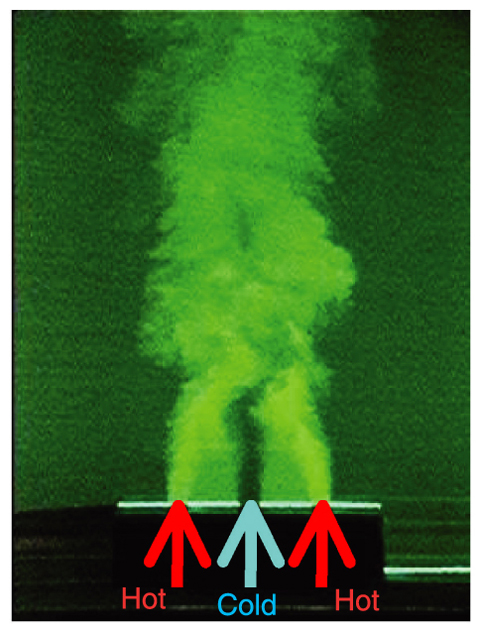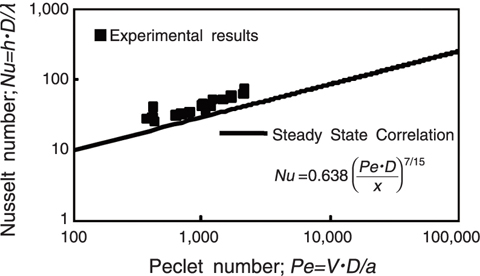
Fig.1-8 Visualized convective mixing of jets

Fig.1-9 Attenuation of temperature fluctuation during transfer from fluid to structure

Fig.1-10 Comparison of heat transfer correlation between steady state and non-stationary conditions
At the core outlet of an FBR, hot fluid is mixed with cold fluid near the reactor structure. Thermal stress is induced due to the thermal expansion of the structure where the temperature fluctuation is transferred from the fluid. A large temperature fluctuation may cause thermal fatigue damage if applied several million times (high cycle thermal fatigue). In a previous study, the relation of the frequency of temperature fluctuation to the vulnerability of a structure to damage was evaluated under special experimental conditions in which this fluctuation could be controlled (see JAEA R&D Review 2007 Topic 1-8). In this study, a sodium jet experimental system was constructed to evaluate the characteristics of the transfer of temperature fluctuation from fluid to structure.
The experimental test apparatus had three parallel jets passing along a stainless steel wall. The center was a cold jet, with hot jets on both sides. This experimental setup models a simplified two dimensional configuration of the reactor core outlet which has cold flow channels of control rods surrounded by hot channels of fuel subassemblies. Fig.1-8 shows convective mixing of the three jets obtained from a water experiment with the same geometry as the sodium experiment. It was observed that the jets at either side inclined toward the center jet. The temperature fluctuation was large at the region where the center jet contacted with the side jets. In the sodium experiment, thermocouples were embedded in the wall at this region. The transfer of temperature fluctuation from fluid to structure was evaluated by the simultaneous measurement of temperatures in fluid and structure. Fig.1-9 shows the temperature histories in fluid near the structure, on the structural surface, and in the structure. The fluid temperature fluctuated with large amplitude. On the structural surface, on the other hand, the amplitude of temperature fluctuation was much smaller than that in fluid. Furthermore, the fluctuation amplitude in the structure was still smaller than that on the structural surface.
This quantitative evaluation of the attenuation makes it possible to efficiently evaluate high cycle thermal fatigue. This attenuation had dependency on temperature fluctuation. This was expressed as a theoretical power curve function. We developed a new method of determining the transfer coefficient of temperature fluctuation from fluid to structure by fitting measured results to this function. Fig.1-10 shows a comparison of the calculated heat transfer coefficients and the heat transfer coefficients under the steady state condition (Poppendiek's correlation equation). It was found that the transfer coefficient of temperature fluctuation could be evaluated using a constant heat transfer correlation equation including the flow velocity dependency (Peclet number dependency). Further experimental study using a mockup model is planned to develop an evaluation method of the high cycle thermal fatigue, and to investigate structural integrity.